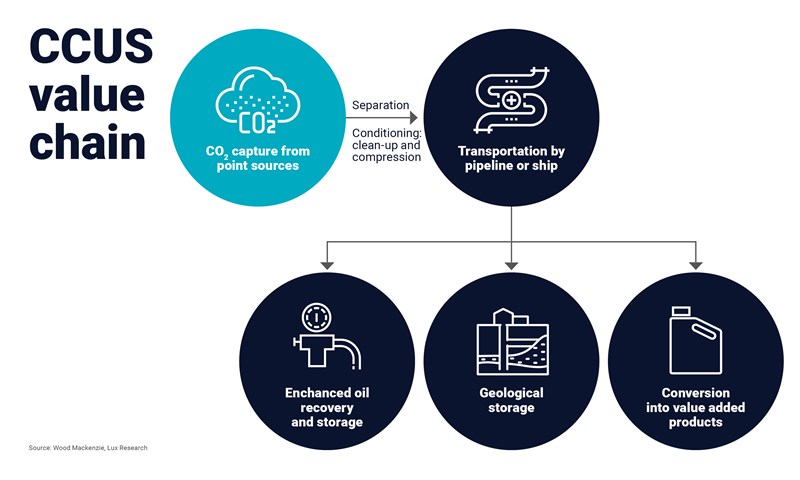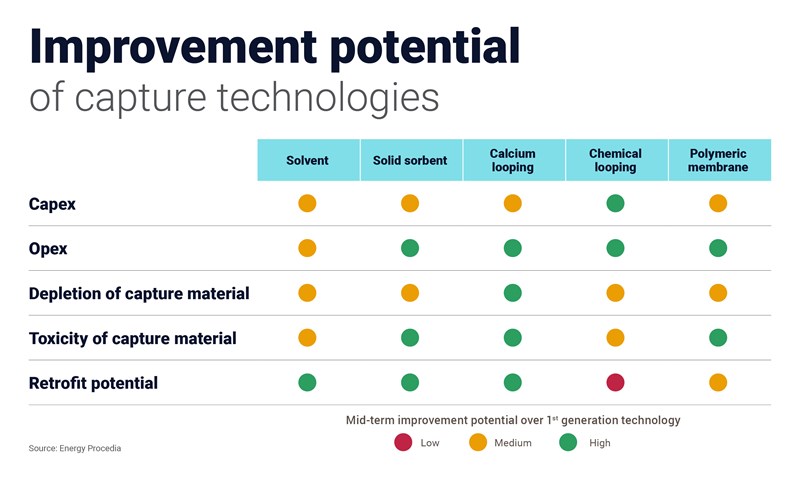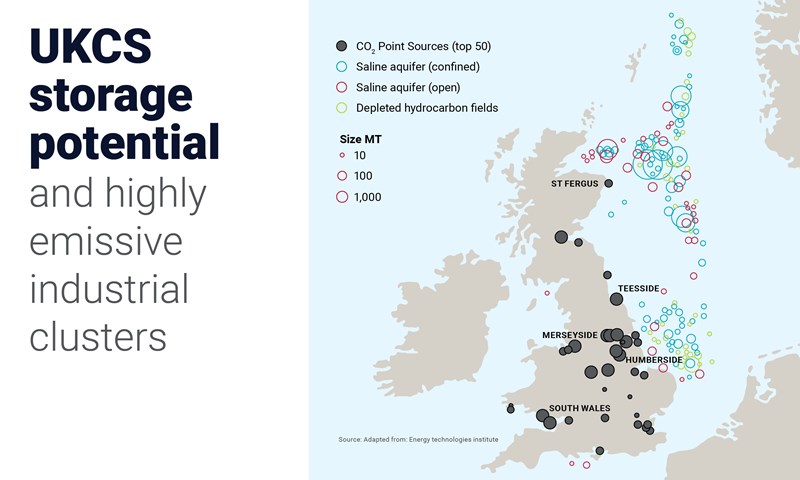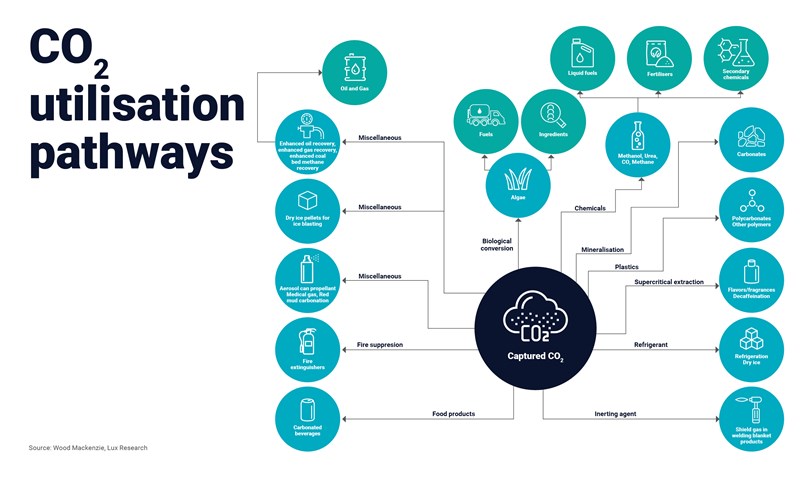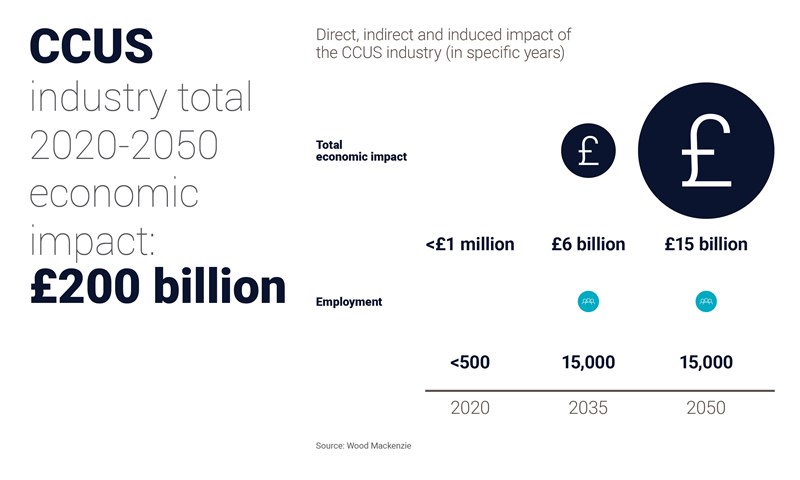Can the UK lead the world in carbon capture, utilisation and storage?
Technological innovation could shift challenging economics, accelerate net zero ambitions and create a world-class CCUS industry
1 minute read
Malcolm Forbes-Cable
Vice President, Upstream and Carbon Management Consulting

Malcolm Forbes-Cable
Vice President, Upstream and Carbon Management Consulting
Malcolm is an expert in strategy development, transaction support and the energy transition.
Latest articles by Malcolm
-
The Edge
No country for oil men (and women)
-
Opinion
The Norwegian emissions dilemma
-
Opinion
The case for developing UK's oil and gas resources: Rosebank and Cambo fields
-
Opinion
Scotland the brave: a Firth of Forth net zero hub for COP26?
-
Opinion
A £2.5 trillion transformation: the economic impact of a net-zero North Sea
-
Opinion
Is net zero oil and gas production possible?
Carbon capture, utilisation and storage (CCUS) is critical to the net zero journey. Without it, decarbonising many hard-to-abate industries will be virtually impossible.
In the UK, CCUS is in its infancy, but if it can mature at pace it will play a key role in supporting ambitious 2050 net zero targets – and establish the UK as a global hub for a game-changing technology. Technological innovation is the key that will unlock challenging economics and help to establish a feasible commercial model.
This is the third of a five-part series exploring the Wood Mackenzie/OGTC report, Closing the Gap: Technology for a Net Zero North Sea. Fill in the form to download the chapter on CCUS and the path to 2050. Or read on for a summary of key themes.
CCUS: high hopes – and a high bar
CCUS technologies can prevent millions of tonnes of CO2 from entering the atmosphere. But the economics are challenged. With high capital costs and long lead times many planned projects have already been put on hold or even abandoned.
But with the potential to reduce emissions from industrial processes by as much as 90%, CCUS remains integral to decarbonisation strategies. The UK’s Committee on Climate Change (CCC) has set a capture and storage target of 176 Mt CO2 per year by 2050, compared with the current levels of less than 0.5 Mt.
It’s a high bar, but meeting this target will be key to the net zero ambitions and enable a truly integrated energy system. In particular, it would kickstart the hydrogen economy by facilitating production of blue hydrogen.
Achieving this vision requires policy incentives and significant investment. A commercially feasible business model would require carbon prices to rise and we estimate £90 billion of capital expenditure across the whole value chain.
The UKCS, a mature oil and gas region, with abundant infrastructure and experience, has a lot to offer. But multiple technologies must be developed in unison to build an efficient industry.
First generation carbon capture: high costs and low economic incentives
First-generation carbon capture or separation technology is capital intensive, with a large carbon footprint. It has been deployed for decades, but mainly in applications such as enhanced oil recovery (EOR) or the beverages industry – applications where there is either a direct use for captured CO2, or where product standards necessitate its separation. In the latter case, most of the CO2 is vented as there’s no incentive to store it.
Right now, only a handful of offshore capture projects exist globally, and none are on the UKCS. Low CO2 concentration levels and space constraints mean deploying the technology offshore is logistically and economically unfeasible. The focus of UK research, development and funding is therefore onshore.
However, several technology challenges affect carbon capture economics. For example:
- The lower the concentration of CO2 in the gas stream, the higher the capture surface area, capital cost and energy required for separation.
- Dirtier post-combustion gas streams, such as those found in power plants, require expensive pre-treatment processing units to filter out impurities.
- First generation capture technologies are primarily chemical amine solvents, and amines can quickly deplete in the presence of contaminants.
Emerging capture technologies (second and third generation) could mitigate some of these challenges – these include polymeric membranes, solid sorbent processes and looping technologies.
To find out more about second and third generation carbon capture technology, fill in the form to read this chapter in full.
Transporting CO2 – making use of North Sea infrastructure
Building CCUS into a viable industry needs substantial infrastructure to carry gases from source to offshore sequestration sites.
Globally, there are more than 8,000 km of CO2 transport pipelines. Most are on the US mainland. By comparison, there are just two North Sea pipelines, both in Norwegian territory (connecting Equinor’s two CO2 storage sites at Sleipner and Snøhvit). Yet there is a huge opportunity on the UKCS to save capital costs by retrofitting parts of its extensive oil and gas infrastructure. Differences between natural gas and CO2 pipelines are minimal, mainly focused on the level of controls needed to maintain safety and asset integrity. The Acorn project (led by Pale Blue Dot and backed by Shell, Total, Chrysaor and Macquarie Group) is already exploring this avenue.
Alternatively, storage tankers can transport CO2 over longer distances, albeit in smaller amounts. Shipping could open the UKCS resources to a wider sequestration market; however, it could mean major redesigns of current large-capacity vessels, or even building new, larger transport ships.
Storage – reservoirs full of potential
The North Sea’s aquifers and depleted reservoirs make it a natural destination for carbon storage. According to the Global CCS Institute, the UK has capacity of around 78,000 Mt CO2, with around 10% in depleted oil and gas fields.
Operators have already collected decades of data on suitable storage sites, but there are still technology and knowledge gaps. Among the challenges is a need for more robust modelling of CO2 migration and behaviour in different rock structures and injection sites. The industry also lacks a standard set of tools and guidelines to set up long-term monitoring.
What are the main technology challenges and innovation gaps for storage? Read the full chapter to find out more.
CO2 utilisation – finding new markets
For CCUS to work as a standalone industry captured carbon must be put to use, either through established methods or by finding new markets.
Offshore, the primary use for CO2 is enhanced oil recovery (EOR), which involves injecting pressurised fluids or gases into rock formations to push out oil trapped in rock pores. More than 260 million tonnes of CO2 have been sequestered through EOR globally, mostly onshore in the US.
EOR is used on the UKCS, but operators rely on readily available materials for injection, such as water, associated gas or polymers, rather than captured CO2, and uptake has been slow. The economics currently look unfavourable due the logistical challenges with offshore and lack of an operational CO2 capture project.
Onshore, captured carbon is essential for producing blue hydrogen, and new markets are opening up. The marine sector, for example, is exploring lower-carbon fuels due to regulations, such as methanol directly produced from CO2.
Could the UK be a focal point for the global CCUS industry
Developing CCUS is not just crucial for the UK meeting its net zero targets, it also has significance beyond its borders.
With estimated storage potential enough to sequester nearly 200 years of CO2 emissions, the UK could be a global hub. Leading the way on developing its CCUS industry will allow the UK to store gases from Europe and elsewhere, as other countries look to decarbonise.
At the other end of the value chain, the UK is also playing a leading role. More than 200 CCUS academics are working at institutions across the country to develop CCUS research, aiming to export knowledge and technology.
With a geological advantage and the legacy of decades of oil and gas experience, the UK can make CCUS succeed, at home and abroad.
How can the UK develop CCUS into a world-leading industry? To find out more, read the CCUS chapter of our report, Closing the Gap: Technology for a Net Zero North Sea. This includes:
- The CCUS technology roadmap to 2050
- Technology challenges for CO2 storage
- The improvement potential of capture technologies
- Speculative technologies for CCUS
Fill in the form at the top of the page for your copy.








